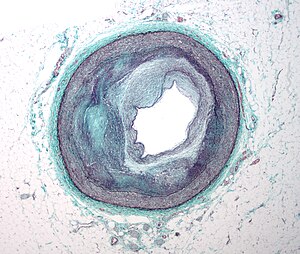There are three items that one should have in their supply of cleaning products -- vinegar, baking soda and bleach!
Vinegar also has other uses in the kitchen and garden too! The article below by Dr. Mercola teaches us about the various types of vinegar, how they are made, and how best to use vinegar for cleaning, cooking and in the garden!
In addiiton to baking, baking soda (bicarbonate of soda) can be used for cleaning put in rinsing water as a fabric softener.
By Dr. Mercola
Story at-a-glance
- There are a number of different types of vinegar; each with its own set of benefits and uses. White distilled vinegar is useful for cleaning and horticultural purposes, while fruit vinegars such as apple cider vinegar has many reported health benefits when taken internally
- The only vinegar that is best avoided altogether is 20% vinegar, which is a petroleum derivative that is dangerous to breathe and can be damaging to your eyes and skin
- A vinegar solution can also be used to remove certain pesticides and bacteria from your fresh produce. Other uses include hair care, and improving the pH of alkaline water, which can benefit plant growth
- Recipes for treating a sore throat; treating various types of pet ailments; and making a non-toxic weed killer are included
Howard Garrett, also known as The Dirt Doctor, has compiled a number of uses for vinegar, including recipes for both internal use and use in your organic garden, which I will share with you here.
- "Vinegar is a wonderful organic tool that was discovered by accident 10,000 years ago when wine was accidentally allowed to ferment too long and turned sour," he writes.
- "It can be made from many products, including beer, apples, berries, beets, corn, fruits, grains, honey, malt, maple syrup, melons, molasses, potatoes, rice, sorghum, and other foods containing sugar.
- Natural sugars from these food products are fermented into alcohol, which is then fermented into vinegar."
- ... The product label will identify the starting ingredients, such as "apple cider vinegar" or "wine vinegar." Malt vinegar is made from the fermentation of barley malt or other cereal grains. Sugar vinegar is made from sugar, syrup, or molasses.
- White, spirit, or distilled vinegar is made by fermenting distilled alcohol. Distilled white vinegar is made from 190 proof alcohol that is fermented by adding sugar and living bacteria.
- ... Vinegar that is made from the petroleum derivative, 99 percent acetic acid, is not acceptable in an organic program."
The name "vinegar" comes from the French words for "sour wine." But it's important to realize that not all vinegars are created equally. Some can benefit your health when taken internally, while others should only be used for tasks such as cleaning, or horticultural purposes, while others are best avoided altogether.
Distilled white vinegar is the type of vinegar you'll want to use for cleaning and laundry. Toward the end of this article I'll also share Garrett's recipe for a non-toxic weed killer formula, which calls for white vinegar. Vinegar and water makes an excellent window cleaner, for example, and vinegar combined with hydrogen peroxide works exceptionally well as both a disinfectant and sanitizer. According to Garrett:"Sprinkling white vinegar atop a dusting of baking soda is terrific for cleaning sinks, tubs, tile floors and other surfaces. For cleaning, it can be diluted with water as much as 50-50. For the herbicide, it should be used full strength. In all cases, the products to buy in this category are true vinegars made by distilling grain alcohol. For the purists, there is organic white vinegar made from corn."
Avoid 20% Vinegar
Garrett warns against using 20 percent vinegar, which is made from 99 percent glacial ascetic acid, stating it's far stronger than you'd ever really need, in addition to being overly expensive. Perhaps more importantly, this type of vinegar is actually a petroleum derivative, which is dangerous to breathe and can be damaging to your eyes and skin."One final warning is that some of the 10 percent vinegars being sold to naïve organic gardeners are the fake 20 percent product that has been cut with water. Proper vinegars should have on the label that they are made from distilled grain alcohol or other similar language indicating natural products from distilling," Garrett warns.
Apple Cider Vinegar—Good for Your Health
Source -- read more: http://articles.mercola.com/sites/articles/archive/2012/08/20/vinegar-as-non-toxic-cleaner.aspx?e_cid=20120820_DNL_artNew_1The cider vinegars, made from fermenting fruits such as apples, have little value as cleaners or herbicides. Instead, these are the types of vinegar associated with a number of different health benefits when taken internally. There are two basic categories of cider vinegars:
- Regular apple cider vinegar
- Organic apple cider vinegar with the "mother" included
When purchasing an apple cider vinegar, you'll want to avoid the perfectly clear, "sparkling clean" varieties you commonly see on grocery store shelves. Instead, you want organic, unfiltered, unprocessed apple cider vinegar, which is murky and brown. When you try to look through it, you will notice a cobweb-like substance floating in it. This is known as "mother," and it indicates your vinegar is of good quality. While it may look suspicious at first, in this case, it's the murky looking stuff you want. As with everything else, the more processed a food is, the less nutritious it is, and this holds true for apple cider vinegar.Surprisingly enough, while apple cider vinegar has historically been prized for its health benefits, little research has been done to evaluate its therapeutic actions. However, lack of scientific studies is a common problem for many natural and alternative therapies.
Disclaimer: The statements regarding the nutritional and medicinal properties of the various foods have not been evaluated by the Food and Drug Administration. These items are not intended to diagnose, treat, cure, or prevent any disease. Please consult your own physician for guidance regarding your health and nutrition.




